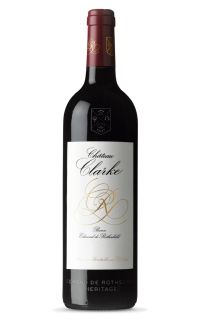All pictures shown are for illustration purpose only. Actual label may vary due to changes between vintages.
Product Notes
Baron Edmond de Rothschild was a prominent figure in the world of wine, having inherited his family’s famous wine-making tradition. He is known for his contribution to the winemaking industry in the Bordeaux region, where he created some of the most prestigious vineyards. One of his notable estates, Chateau Clarke, is situated in the Listrac-Médoc region, north of Bordeaux. The estate produces award-winning wines that are renowned for their depth, complexity and character. The Chateau boasts 54 hectares of vineyards, with the majority of the production dedicated to red wine. Baron Edmond de Rothschild’s legacy has left a lasting impact on the world of wine, and Chateau Clarke continues to maintain the Rothschild legacy of exceptional winemaking.
Tasting Notes
Château Clarke is a beautiful crimson color with a deep purple edge. Both intense and complex, the nose displays fresh fruit aromas (black currant and black cherry) and elegant oak nuances, as well as hints of menthol and liquorice with aeration. The wine starts out round and straightforward and follows with rich, concentrated and velvety tannic texture along with beautiful acidity that provides balance and freshness.

















